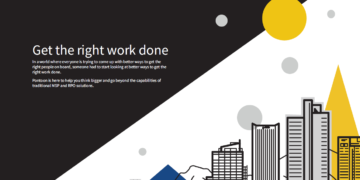Direct sourcing strategies: Workforce experts insights
Video
.
Industry panel discussion on direct sourcing strategies
We partnered with TalentNet to host an informative discussion with workforce experts from around the industry. The panellists included Jason Carter, Director of Regional Talent Acquisition Practice Lead at Astellas, Scott Farley, VP of Global Workforce Sourcing Procurement at Northern Trust, and Justin Lumby, COO of TalentNet. Jay Eardly, Global Segment Head of Financial Services at Pontoon Solutions moderated the panel. The participants gathered around the proverbial fireplace to chat about direct sourcing for an audience of HR and procurement professionals from across the globe.

“Direct sourcing is a strategy whereby a company leverages its employer brand to source and curate talent, creating private talent communities specifically and most often for a contingent worker.”
Jay Eardly, Pontoon
Evolving trends in direct sourcing and talent acquisition
As one of the most popular trends in the industry, direct sourcing has become a keynote topic at major conferences. SIA’s recently released survey reports 60% of respondents said they would be exploring direct sourcing by 2023.
We dedicate this discussion to the industry leaders who are curious about or already considering direct sourcing but can benefit from lessons learned before moving forward.
Direct sourcing strategies for talent acquisition
Keep on reading for a few of the session highlights:
What is a high-level overview of your direct sourcing structure and what are the successes and benefits you’ve realised from that?

“Our efforts were focused on the US as 80% of requisitions were here and has only been rolled out in the US since the need isn’t in the other countries.
Some drivers for implementing direct sourcing included finding the overall channel of procuring talent, looking for cost savings and improving attrition rates. Since our rollout in July of 2019, significant savings have been achieved, attrition levels have been approved, and we’ve brought in a diverse level of talent through the direct sourcing channels.”
Scott Farley, Northern Trust
The structure includes a curator that managers talent pool and payroll for resources going through the talent pool, an MSP to manage the requisition process and we’ve seamlessly integrated TalentNet with the VMS. The implementation went very well, and the programme is manageable.

“How can moving to a direct sourcing model support quicker access to talent and build agility into the recruitment process? What have you seen?“
Jason Carter, Astellas
Scott Farley: Direct sourcing has provided us with options. We wanted a different option other than going to our general staffing firms. It’s given us access to a talent pool that we can control a little bit more than our standard programme of staffing firms. These are people that are reaching out to Northern Trust. They’re going to our careers site; they’re clicking on a link and they’re looking at the roles we have open. They’re already searching out our organisation, our brand. They already have an invested interest level than those resources that are getting called by staffing firms.
We can also search the pool prior to the formal release of requisition and see if they meet our needs without the long-drawn process, which helps bring in talent faster.
What impact have you seen and what tools have you used to reduce attrition?
Scott Farley: 15% reduction in attrition levels, comparatively speaking to our general staffing firms. It’s hard to determine if that’s the only factor, but we believe it’s the main factor in trying to determine why we have different levels of attrition.
During the pandemic, we had higher levels of attrition.
In the programme today, we have 15-20% less attrition than those who are coming in from the direct sourcing channel vs. our general staffing firms. I think it’s directly related to the fact that these people are searching for your brands and the fact that the curator needs to do a really good job of keeping these people warm, understanding and updating the profiles that are within the talent pool so that we’re able to more accurately match them up to the jobs that we have.

“Contingent workforce, it’s transient by nature so we often refer to talent pools as talent assets that you’re building over time so it’s not just the initial engagement with your connection points with that member of the talent pool of Northern Trust, but it’s also being able to continually keep in touch with those folks over time.”
Justin Lumby, TalentNet
Scott Farley: That’s exactly right. And within the profiles of each one of these resources in our talent pool, as they change roles and skills and interests they’re able to update the profiles which, again, gets us to better match the roles we have available and the people within the talent pool.
What does implementation look like?
Scott Farley: You have to get everyone on board with what you’re trying to do. You have to understand what gaps you have with your organisation. You have to sell the benefits. Don’t shy away from explaining the pros and cons of how you managed to get through some of those more difficult conversations.
Getting executive leadership to buy-in is paramount to the success of your programme.
Don’t be afraid to ask the tough questions when you’re in implementation and don’t wait until you’re implemented to ask a question. Take the time to set it up correctly and investigate all your best practices that TalentNet and your creator offer. And then implement as many as you can at the start. This is going to help you get started and succeed as quickly as possible.
I think one of the things Northern Trust didn’t do at the onset was take every one of those recommended best practices and I believe happened is it really slowed us down at the very beginning of our implementation, on reaching our goals. That’s no fault of TalentNet, my curator or Northern Trust. It was just a situation of how we rolled it out and our comfort level in the things we took to heart in recommending those best practices.
How much change needed to happen in your existing processes and team?
Scott Farley: From a process perspective, there was not much change, but it will depend on how you make your process. We were going to add TalentNet at the very beginning of our process. TalentNet and Beeline worked together to integrate so that that process could be seen. And that’s really an MSP function for us at Northern.
From a manager perspective, not a lot of change, but it’s about communication. We had to explain to them what direct sourcing is and sending out an email blast isn’t impactful enough to get them to understand. So it’s vital that your MSP and your curator really explain as requisitions are needed why they’re seeing certain things in the tool.
What kind of feedback do you get from your hiring community?
Scott Farley: A lot of the early feedback was “hey I just don’t understand why we need this supplier. I don’t understand why we’re bringing in a new supplier”; which made us think that they just don’t understand that this isn’t a supplier. It’s a way of finding new talent. It’s an avenue for searching for new talent.
And the costing. When they saw the overall rates and the tool they thought “well this must not be a quality candidate”. Once we sat down with them and explained the process, they were able to enhance their understanding of our organisation and the curation of talent in the pool.
Justin Lumby: From our perspective, one of the objectives during the implementation of direct sourcing is there should really be minimal, if any change at all, to the hiring manager experience. At the end of the day, they’re still creating their requisitions in the VMS, they’re still evaluating candidates in the VMS. Most of the changes are really happening in the back and I think those changes are important and it needs to happen. But for your end customers, your manager, it should not be day-to-day.
What change in relationship have you seen with your supplier community?
Scott Farley: We spent a lot of time with the overall strategy and how we were going to implement and how this would impact our current suppliers. Three to four quarters prior to rolling this out we let our suppliers know that we were going to start evaluating our programme and the overall number of suppliers and most likely will be eliminating one or two suppliers. We had an in-person supplier summit and we talked about the rollout of direct sourcing and why we were doing it.
I think the rollout went well because we communicated with them and shared with them what we were doing. We haven’t seen too much negative impact on our programme, if at all.
How has the solution of direct sourcing evolved?
Justin Lumby: I think it’s changing in a number of ways, both from a technology perspective and general strategy perspective and from the operational perspective. So, from a technology perspective, certainly in our experience when we first started, typically the deepest subscription we would have is around redeployment of a known workforce. That then started to expand into brand attraction, having something on your career sight, job boards, LinkedIn, etc. and really advertising your brand out into the market and trying to attract that talent.
From a strategy point of view, it started to develop a bridge between the procurement and finance departments, and the talent acquisition and HR departments. I think because of a lot of silent technology in the business process, it was hard to make that reality. Now we’re seeing some of those domains come together and become a reality.
Operationally, the MSP world has already evolved and matured but with the introduction of direct sourcing we’re really seeing MSP’s expand their typical scope of services and really get into this more strategic, almost talent attraction, role.
What are the key questions to ask here?
Jason Carter: I think the question that you have to consider is business readiness. One of the lessons I learned from going through that experience the first time around is making sure I was better prepared from a business readiness perspective. So it certainly felt as we went through our launches that this was an uphill struggle. I think, talking to Scott, it didn’t seem that that was such a difficult sell in terms of change management. But from a business readiness perspective, if there was anything that you had to take into account that you thought that “this was going to land successfully”, in addition to what you’ve said already.
Scott Farley: I think the overall impact to your stakeholders is so minimal. The readiness, they should be ready, it’s just another avenue to get talent. I think the expectations at the beginning when you’re selling what you’re trying to do with your stakeholders and your leadership, you’ve got to make sure that your business case, you’re going to be held accountable to that business case.
“You’ve got to make sure you’re working hand in hand with everybody who’s involved in this process from the curator, to your payroll services, to TalentNet, and monitor along the way. You may not know where the gaps are right away, but you have to find them quickly or you’re not going to hit those goals you put in place.”
Scott Farley, Northern Trust
Learn more about Pontoon’s direct sourcing solution for contingent workforce programmes.
Related Post
Craig Rhodes - Solution Architect
At Pontoon, we have been on quite a journey in our technology and experience space!
In 2019, our tech team delivered a strong stack of technologies that ...
Similar Resources





